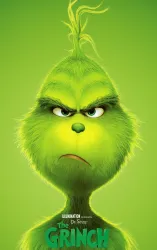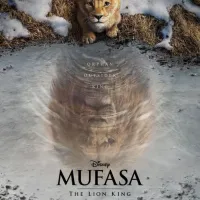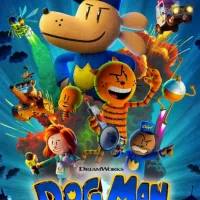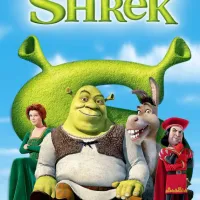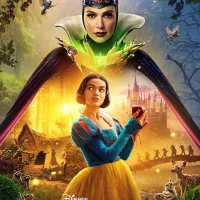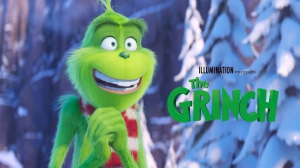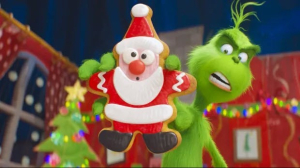The Grinch
The Grinch, a timeless holiday classic, is based on the beloved book "How the Grinch Stole Christmas!" written by Dr. Seuss. This character, known for his green fur and distaste for Christmas, has become an iconic figure representing the spirit of redemption and transformation during the festive season. Over the years, the story has been adapted into various formats including animated television specials, feature films, and even live-action adaptations, each bringing its unique interpretation to the tale.
The Origin of The Grinch
The character of the Grinch was introduced in Dr. Seuss’s book published in 1957. The storyline revolves around the Grinch, who lives atop Mount Crumpit, isolated and bitter towards the Whos in Whoville. His disdain for Christmas is palpable, and he devises a plan to ruin the holiday for the Whos by stealing their presents and decorations. As the plot unfolds, he discovers an important lesson about what Christmas really means, highlighting themes of community, generosity, and the potential for personal change.
Iconic Adaptations
Over the years, several adaptations have brought The Grinch's story to a wider audience, each adding unique elements that resonate with different generations. The animated special, released in 1966 and narrated by Boris Karloff, is particularly beloved, as it captures the essence of Dr. Seuss's whimsical storytelling with charming animation. This classic piece remains a staple in holiday programming.
The Live-Action Transformation
The live-action film released in 2000 and directed by Ron Howard stars Jim Carrey in the titular role. Carrey's portrayal of the Grinch is both comedic and poignant, delivering a performance that balances humor with depth. The film expands upon the original story, exploring the backstory of the Grinch and his complex emotions, thus creating a richer narrative experience.
Animation in the Modern Era
In 2018, a CGI animated version of The Grinch was released, further revitalizing the story for contemporary audiences. This adaptation, voiced by Benedict Cumberbatch, brought a modern twist to the classic tale while retaining the heart of the story. The animation style was vibrant, appealing to both children and adults, and the film was accompanied by a new score that enhanced the viewing experience.
Themes of Redemption and Transformation
The central theme of The Grinch is redemption. Initially, the Grinch embodies negativity and a desire to isolate himself from the joy that surrounds the Whos. His transformation begins when he encounters Cindy Lou Who, who sees beyond his exterior and recognizes his potential for kindness. This pivotal interaction marks the beginning of his journey towards understanding the spirit of Christmas.
The Role of Cindy Lou Who
Cindy Lou Who plays a crucial role in The Grinch’s transformation. As an innocent and caring child, she symbolizes the purity and goodness that can be found even in the most hardened hearts. Her compassion towards the Grinch highlights an important message: that love and kindness can inspire change, regardless of a person’s past actions or feelings.
Musical Elements and Their Impact
Music plays a significant role in The Grinch story across its adaptations. The original animated special features memorable songs, including "You're a Mean One, Mr. Grinch," which encapsulates the character's villainous qualities in a playful manner. The live-action adaptation and animated film both introduce new songs that enhance emotional moments and contribute to the overall storytelling, making the narrative more engaging.
Visual Aesthetics and Animation Style
The visual representation of The Grinch has evolved over the years but maintains the quirky and exaggerated style typical of Dr. Seuss's works. The vibrant colors, whimsical designs, and fantastical elements draw viewers into the magical world of Whoville. Each adaptation brings its unique style while staying true to the playful essence of the original material.
The Impact of The Grinch on Popular Culture
The Grinch has solidified its place in popular culture, becoming synonymous with Christmas spirit and themes of kindness. Phrases and scenes from the story have entered the cultural lexicon, often referenced during the holiday season. Merchandise, decorations, and themed events further illustrate the enduring appeal of this character and his journey.
Critique and Analysis of Different Versions
Each adaptation of The Grinch has its strengths and weaknesses. The animated classic is praised for its concise storytelling and emotional impact in a short runtime. The live-action version, while divisive among purists, successfully adds depth to the Grinch's character, offering a backstory that explains his bitterness. The 2018 animated feature, meanwhile, captivates with its visual flair but might be critiqued for not straying far from the well-established narrative.
Audience Reception and Box Office Success
Audience reception for The Grinch adaptations has varied, but overall, they have enjoyed considerable success. The 2000 live-action film grossed over $345 million worldwide, while the 2018 animated film also performed well, appealing to a new generation of viewers. The consistent interest in these adaptations highlights the lasting relevance of the story and its themes.
The Grinch’s Cultural Significance
The Grinch highlights the significance of caring for others and being a part of a community. His journey from isolation to acceptance resonates deeply during the holiday season, a time traditionally centered around togetherness. In an era where individualism often prevails, The Grinch’s tale encourages viewers to embrace the values of empathy and generosity.
Marketing and Merchandise
The success of The Grinch has led to a wide range of merchandise and marketing opportunities. From plush toys to holiday decorations, fans can bring a piece of Whoville into their homes. The commercialization of the character serves to enhance its reach during the holiday season, making The Grinch a familiar figure in countless households around the world.
Conclusion of The Grinch as a Holiday Classic
The enduring appeal of The Grinch lies in its universal themes, compelling characters, and the spirit of hope and change. As adaptations continue to surface and engage audiences anew, the moral of the story remains: that even the most seemingly unredeemable characters can find their way back to joy and belonging with the power of love and kindness. Whether enjoyed through the pages of the book, the animation, or live-action films, The Grinch continues to inspire heartwarming celebrations of the Christmas spirit.
- The story promotes themes of redemption and transformation, encouraging positive change in individuals
- Cindy Lou Who serves as a symbol of innocence and compassion, showcasing the impact of kindness
- The animations and visuals are colorful and engaging, capturing the whimsical essence of Dr. Seuss's work
- The character of the Grinch offers a complex portrayal of emotions, resonating with audiences of all ages
- It provides a fresh take on holiday classics, appealing to new generations through various adaptations
- The catchy musical numbers enhance the storytelling and create memorable experiences for viewers
- Some adaptations may stray too far from the original story, leading to mixed reception among purists
- The live-action version's humor might not resonate with everyone, leading to polarized opinions
- The storyline may be deemed overly simplistic or predictable for some viewers seeking deeper narratives

